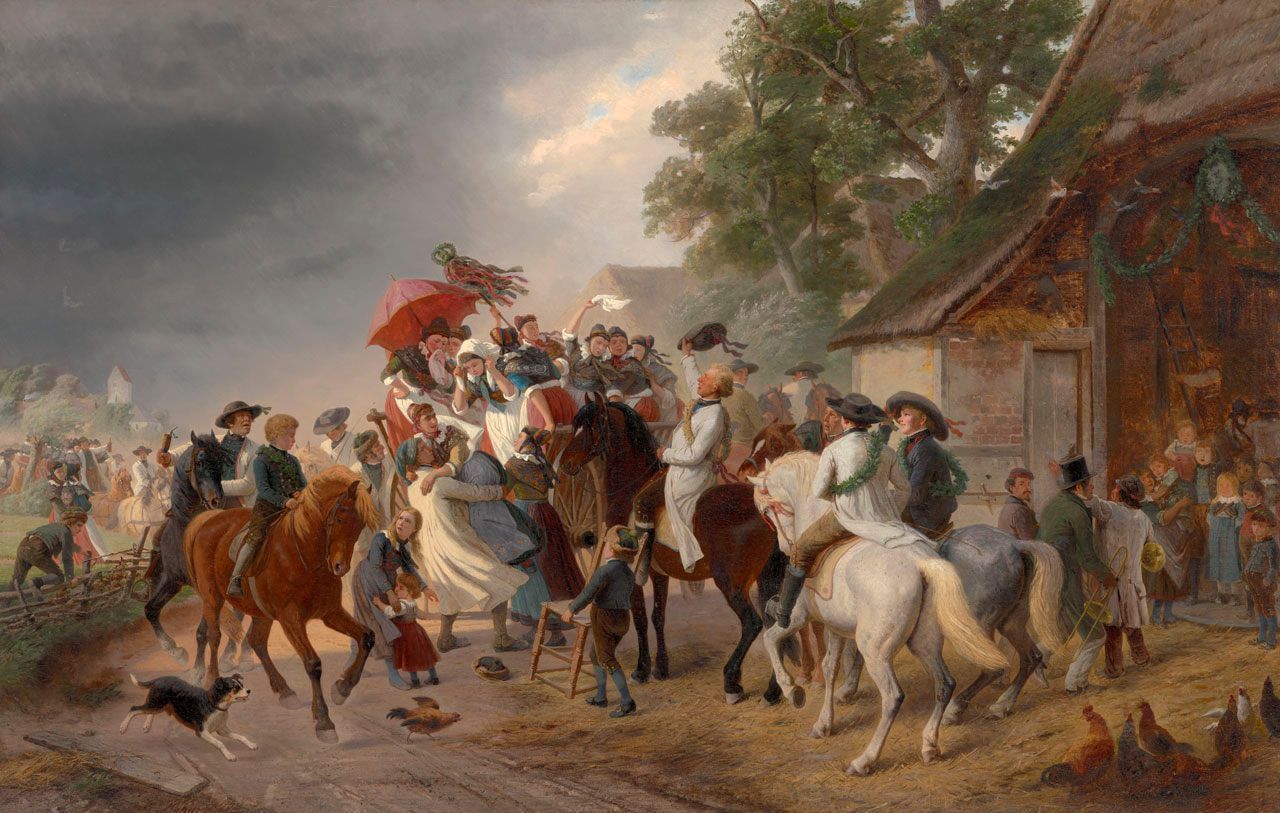Note
User Text: Karl Wilhelm (William) Hahn painted scenes of 19th century daily life, first in his native Germany and then in California. Born in Ebersbach, he studied at the Royal Academy of Art in Dresden and at the Düsseldorf Academy. His association with painters Julius Hübner and Emanuel Leutze in Dresden helped hone his talent for capturing human interaction.
The Harvest Festival epitomizes Hahn’s German period. Exhibited in Dresden and Vienna before Hahn brought it to the United States, it depicts an autumn celebration near Düsseldorf. Such village festivals and native costumes, once discarded as relics of an unfashionable past, were revived in the mid-19th century to celebrate German traditions as the country moved towards unity.
Hahn met and befriended Californian artist William Keith and his wife during their 1869–70 sojourn in Germany. On the eve of the Franco-Prussian War, they left Europe together, traveling to Maine and then Boston, where Keith and Hahn shared a studio. They came to California in the spring of 1872.
Shortly after arriving in San Francisco, Hahn began work on Market Scene, Sansome Street, San Francisco, his first major painting to depict contemporary life in California. For six months, he made careful studies of people, agricultural products, mules, and the approaching horse-drawn trolley. He also carefully referenced the kinds of businesses that lined the street, including the gigantic pitchers that served to advertise a ceramic manufacturing company. His attention to detail paid off, and he sold the painting to Judge E. B. Crocker for $2,500.
Hahn continued to paint genre subjects in the San Francisco Bay Area, Sierra, and Monterey Peninsula for the next several years. In 1873, he completed another San Francisco scene, The Convalescent. The subject and her guest are shown in a warm Victorian interior with San Francisco’s Temple Emanu-El and the First Congregational Church clearly visible through the parlor window.
Hahn spent 1878 in New York and exhibited at the National Academy of Design. In 1882, he returned to Europe on his honeymoon, settled in London, and died unexpectedly in Dresden in 1887.
